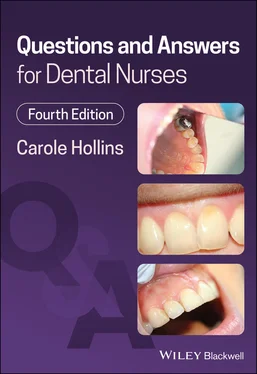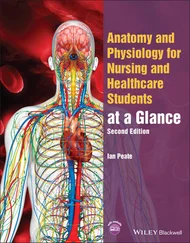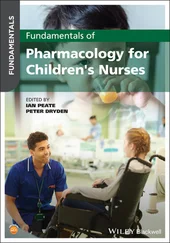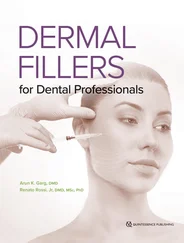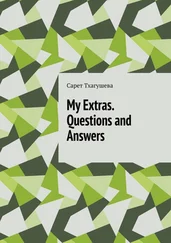Carole Hollins - Questions and Answers for Dental Nurses
Здесь есть возможность читать онлайн «Carole Hollins - Questions and Answers for Dental Nurses» — ознакомительный отрывок электронной книги совершенно бесплатно, а после прочтения отрывка купить полную версию. В некоторых случаях можно слушать аудио, скачать через торрент в формате fb2 и присутствует краткое содержание. Жанр: unrecognised, на английском языке. Описание произведения, (предисловие) а так же отзывы посетителей доступны на портале библиотеки ЛибКат.
- Название:Questions and Answers for Dental Nurses
- Автор:
- Жанр:
- Год:неизвестен
- ISBN:нет данных
- Рейтинг книги:5 / 5. Голосов: 1
-
Избранное:Добавить в избранное
- Отзывы:
-
Ваша оценка:
- 100
- 1
- 2
- 3
- 4
- 5
Questions and Answers for Dental Nurses: краткое содержание, описание и аннотация
Предлагаем к чтению аннотацию, описание, краткое содержание или предисловие (зависит от того, что написал сам автор книги «Questions and Answers for Dental Nurses»). Если вы не нашли необходимую информацию о книге — напишите в комментариях, мы постараемся отыскать её.
An essential study aid for dental nursing students preparing for the NEBDN exam Questions and Answers for Dental Nurses
Questions and Answers for Dental Nurses 4th Edition
Questions and Answers for Dental Nurses — читать онлайн ознакомительный отрывок
Ниже представлен текст книги, разбитый по страницам. Система сохранения места последней прочитанной страницы, позволяет с удобством читать онлайн бесплатно книгу «Questions and Answers for Dental Nurses», без необходимости каждый раз заново искать на чём Вы остановились. Поставьте закладку, и сможете в любой момент перейти на страницу, на которой закончили чтение.
Интервал:
Закладка:
Answers
Multiple choice questions
1 The correct answer is C. Describing possible dental treatment that may be necessary if children do not brush their teeth regularly and effectively, especially if words such as ‘toothache’, ‘smelly breath’ and ‘needle’ are used, is usually quite counter‐productive. Indeed, it may seem threatening to some patients. Instead, the dental team should engage children in correct brushing activities, in a friendly manner and at a communication level appropriate to their age. At this age children tend to respond well to a hands‐on, getting‐involved approach to instruction.
2 The correct answer is C. Facing someone while they speak indicates the listener is actually listening to them, whereas most of the other options indicate the listener has mentally dismissed the speaker and is concentrating on something else. Interrupting someone while they speak, apart from being rude, also indicates the listener believes what they have to say is more important or that they disagree with what the speaker is saying.
3 The correct answer is C. Pre‐written templates for advice, such as post‐operative instructions, or information leaflets about a new type of treatment are invaluable in reinforcing important information from the dental team to their patients. Patients should be encouraged to take the written information away and read it at their leisure so that they then follow advice correctly or understand proposed treatments better, or it prompts them to ask further questions to clarify the information.
4 The correct answer is C. Although usually relaxing to most patients and staff (depending on the music played), any background noise may hinder partially sighted or blind patients from relaxing during a treatment session, as it makes it more difficult for them to hear the likely sounds they have been told to expect during the treatment. Instead, the clinician is far better providing almost a running commentary of the treatment as it progresses through the session, and this also helps to reinforce the patient’s trust in the team and that they are totally focussed on the patient.
5 The correct answer is D. Sitting down while talking to someone, or while they are talking to you, indicates that they have your attention – they are being listened to and communicated with. All other options are examples of poor communication skills and that the person is being dismissive, defensive or not believing what is being said.
6 The correct answer is B. The GDC Standards document says that the whole dental team must demonstrate good communication skills so that patients can understand what is being said to them, otherwise they cannot be said to have given consent for treatment. The document also says the team should listen to their patients, take their individual needs into consideration and promote their rights and responsibilities to make decisions about their health and care.
7 The correct answer is C. Written protocols do not require to be learned and repeated from memory; they are always available to be referred to while talking to the patient. Their content will not change between patients or appointments and will therefore remain consistent. In addition, protocols are developed and produced by the dental team together, often during discussions at staff meetings, so the information given will have been accepted and agreed upon by all team members.
8 The correct answer is C. If patients do not speak English it is irrelevant whether they are spoken to quickly or slowly – they will not understand either way. Non‐English NHS information leaflets, ‘Language Line’ and online translation software are all excellent methods of ensuring that all patients understand the information they are being given by the dental team and are therefore able to give consent. Interpretation by a family member is acceptable in some situations but is reliant on the knowledge level of the interpreter – often younger family members (even children) are relied on to impart sometimes complicated health information to an older family member. This is not an ideal situation.
9 The correct answer is B. Partially deaf patients quite rightly become fed up with everyone shouting at them, believing this helps to impart information to them more effectively. Instead, many subconsciously lip read when they are being spoken to, so being able to watch a speaker’s mouth while they are talking is very important to them. Facing the patient and especially removing a mask while talking, using clear enunciation of words and talking at a regular speed all enable the team to communicate effectively with partially deaf patients. Hearing loops at enclosed reception desks are useful for patients wearing a hearing aid and, if all else fails, providing information in a suitable written format ensures a level of communication with the patient.
10 The correct answer is B. Primary school children have short attention spans but are never happier than if they can physically take part in an activity. Good examples of dental relevance are arranging stacks of food and drink packaging as ‘good’ and ‘bad’ for teeth, toothbrushing sessions (especially if disclosed by a member of the team first, and with aprons on), relevant drawing and colouring activities and so on.
11 The correct answer is E. As the saying goes, ’a picture paints a thousand words’, and although some clinical photographs may be used as a shock tactic, sometimes it is what is necessary to convey information. With gingivitis, poor oral hygiene, periodontitis and caries, if the photograph is actually of the patient’s own mouth and shown in a sensitive rather than accusatory manner, it is often the only way of convincing the patient that change is required.
12 The correct answer is D. Rather than trying to describe, for example, what a crown is and how the treatment is carried out, show the patient before and after photographs of a successful case. This allows patients to visualise the improvement achieved with the treatment and relate it to themselves. It allows them to ask further questions about the procedure, and their understanding can be enhanced by the provision of further written information too.
13 The correct answer is A. When a treatment plan has been formulated it must be discussed verbally with the patient so that the patient can accept the proposed treatment and give consent, or refuse part or all of the treatment plan and give limited or no consent, respectively. During the discussion the patient must be told of alternative treatments where appropriate, the risks and benefits of the proposed treatment, the consequences of not having the treatment where appropriate and the costs of the treatment.
Extended matching questions
1 The correct answer is c). Teenagers often go through a phase of being embarrassed about their bodies, especially as they go through puberty and mature. They do not respond well to being ridiculed or admonished in front of parents or siblings and may tend to show off and ‘act up’ in front of friends or girlfriends/boyfriends. It is best to provide their oral hygiene instruction away from others, in a face‐to‐face session where they can ask questions without appearing silly and where difficult topics such as smoking can be discussed without others overhearing.
2 The correct answer is h). Modern hearing aids have switches that enable normal sound to be received differently when activated around a hearing loop device. When in use, amplified background noise is blocked while speech is transmitted clearly so the patient and reception staff can converse normally through the glass.
3 The correct answer is g). Eye rolling when being confronted about an issue indicates a lack of care or interest by the person being challenged. It can be interpreted as almost saying ‘so what?’ or ‘not again?’ by the challenger and is rude, dismissive and inflammatory.
Читать дальшеИнтервал:
Закладка:
Похожие книги на «Questions and Answers for Dental Nurses»
Представляем Вашему вниманию похожие книги на «Questions and Answers for Dental Nurses» списком для выбора. Мы отобрали схожую по названию и смыслу литературу в надежде предоставить читателям больше вариантов отыскать новые, интересные, ещё непрочитанные произведения.
Обсуждение, отзывы о книге «Questions and Answers for Dental Nurses» и просто собственные мнения читателей. Оставьте ваши комментарии, напишите, что Вы думаете о произведении, его смысле или главных героях. Укажите что конкретно понравилось, а что нет, и почему Вы так считаете.
